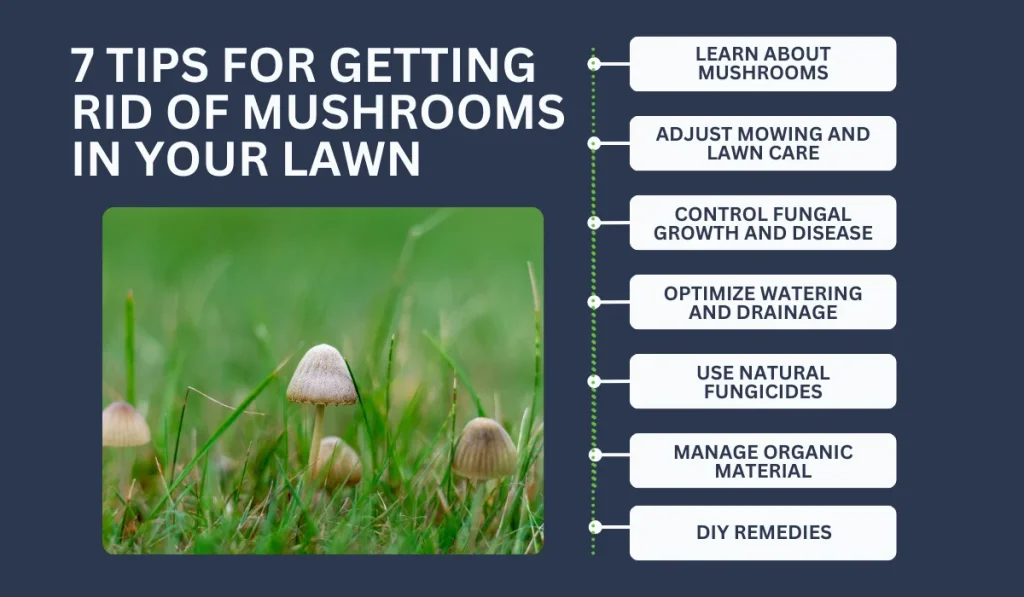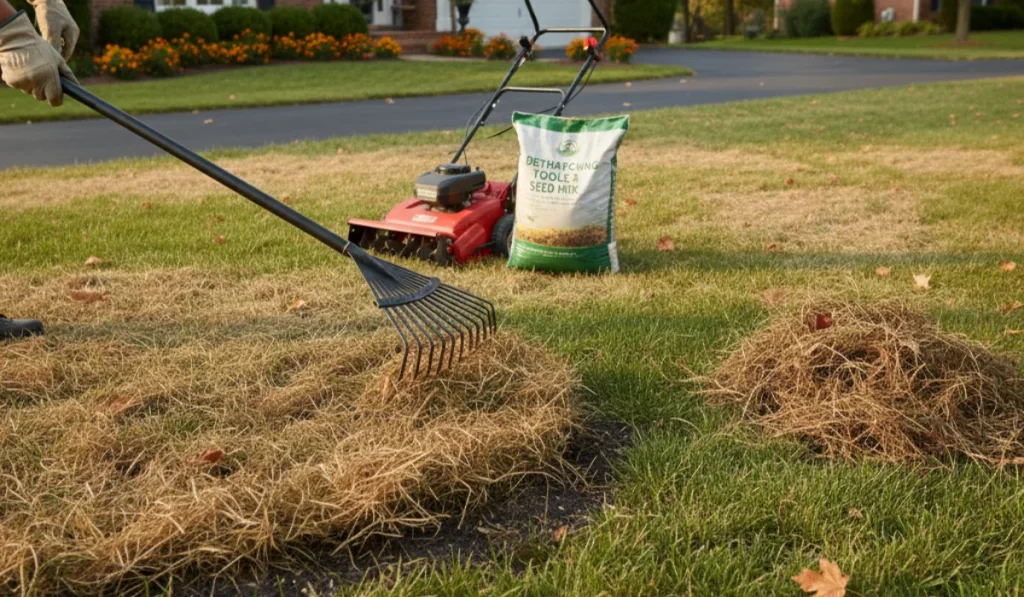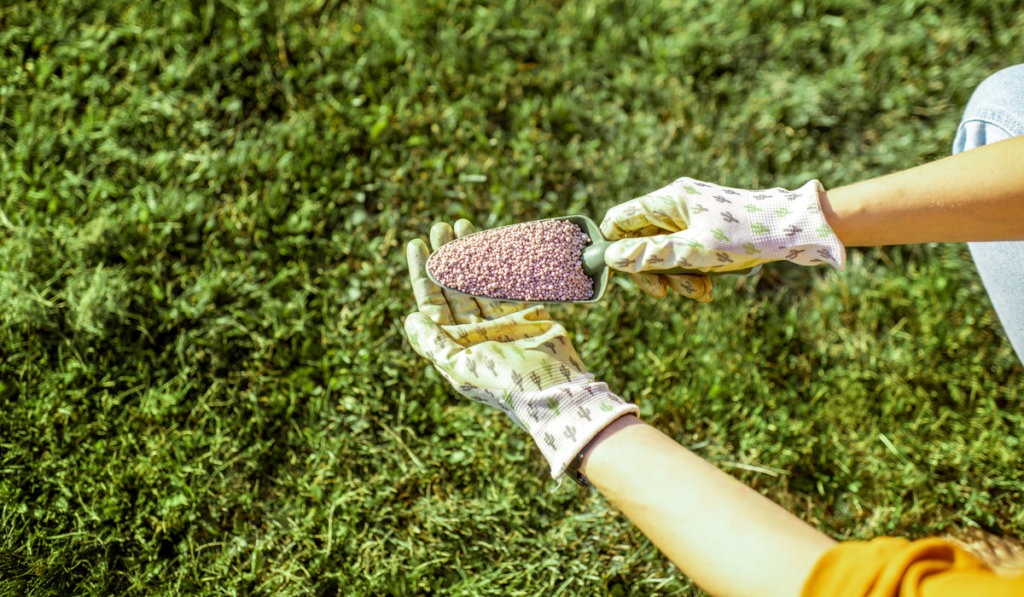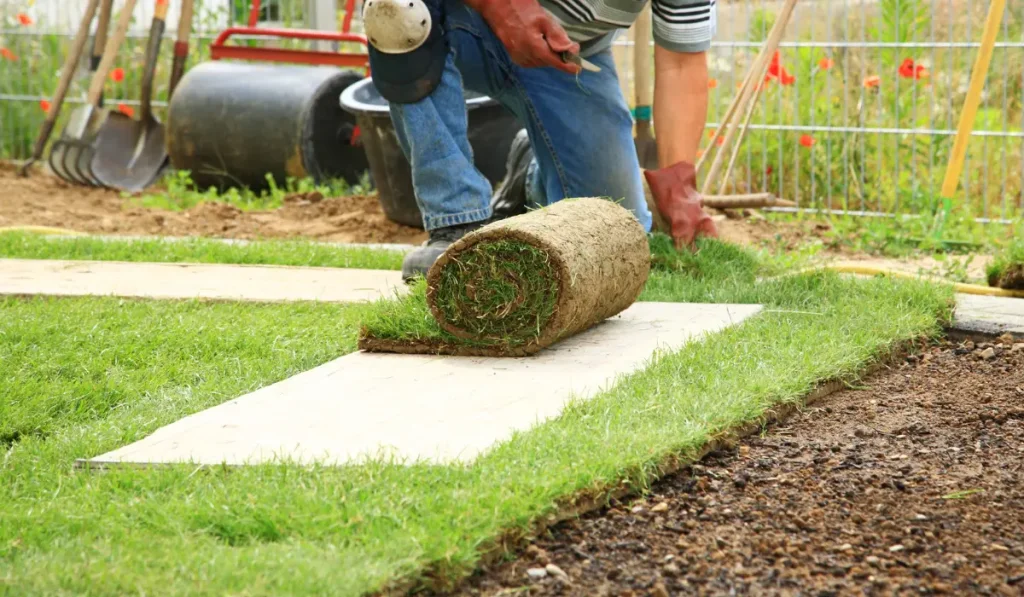Mushrooms on your lawn can be a real eyesore. To get rid of mushrooms, you need to address the underlying issues, such as excess moisture, organic debris, and shade.
How do you tackle mushrooms without harming your grass? Keep reading to discover actionable steps and valuable tips for maintaining a mushroom-free lawn.
Key Takeaways
- Mushrooms grow in moist, shaded areas rich in organic material.
- Regular lawn care practices such as mowing, dethatching, and aerating can reduce conditions favorable to mushrooms.
- Optimizing watering schedules can help improve soil drainage and prevent excessive moisture that supports mushroom growth.
- Natural fungicides like baking soda, vinegar, and neem oil offer environmentally friendly options for controlling mushrooms.
How to Get Rid of Mushrooms in Your Lawn

Learning effective strategies to kill mushrooms starts with understanding their biology, adjusting lawn care practices, and utilizing natural and chemical remedies.
1. Learn About Mushrooms
Wild mushrooms are fruiting bodies of fungi that thrive in moist, shaded areas with organic material. It is crucial to recognize the conditions that favor any type of mushroom, such as puffballs or toadstools, sprouting.
Here’s what you should know:
- Moisture Levels: New mushrooms need moisture to grow.
- Organic Matter: Decomposing leaves, grass clippings, and tree roots are ideal food sources.
- Shade and Shelter: Mushrooms prefer shaded areas.
- Fruiting Cycle: Mushrooms appear when conditions are right.
2. Adjust Mowing and Lawn Care
Proper lawn maintenance can deter mushroom growth. A well-maintained lawn minimizes organic debris, directly impacting the mushroom population.
Essential practices include:
| Practices | How It Works |
|---|---|
| Regular Mowing | Keep grass at an optimal height with a lawn mower. |
| Grass Clippings | Remove or mulch clippings. |
| Dethatching | Reduces thatch build-up. |
| Aerating | Improves soil drainage and reduces compaction. |
3. Control Fungal Growth and Disease
Applying fungicides may help in severe cases of lawn diseases. These chemical treatments focus on eliminating spores and preventing future lawn fungus outbreaks.
Consider these options:
- Chemical Fungicides: Effective for large infestations.
- Application Timing: Apply during dry periods.
- Correct Dosage: Follow the manufacturer’s instructions.
- Safety Measures: Use protective gear during application.
4. Optimize Watering and Drainage
Excess moisture from poor drainage favors fungal growth. Optimizing your lawn’s watering schedule and ensuring proper drainage can significantly reduce mushroom problems.
Essential aspects include:
| Aspects | Details |
|---|---|
| Drainage Improvement | Ensure water doesn’t pool. |
| Watering Schedule | Water early in the morning. |
| Moderate Watering | Avoid overwatering. |
| Soil Aeration | Promotes quicker drying. |
5. Use Natural Fungicides
Natural fungicides can be a safer alternative to chemicals. They are often less harmful to the environment and beneficial organisms in the lawn.
Examples of natural treatments include:
- Baking Soda Solution – Mix with equal parts water inside a spray bottle.
- Vinegar Solution – Use diluted vinegar.
- Neem Oil – Acts as a natural fungicide.
- Cornmeal – Can inhibit fungal growth.
6. Manage Organic Material
Minimizing the organic material that serves as food for fungi is vital. Effective practices to follow include:
| What to Do | Details |
|---|---|
| Remove Debris | Regularly clean up fallen leaves and branches. |
| Tree Stump Removal | Stumps are primary fungal sources. |
| Compost Properly | Ensure compost is well-managed. |
| Remove Animal Waste | Remove promptly from the lawn. |
7. DIY Remedies
Home remedies can offer quick and easy ways to manage edible and poisonous mushrooms. Although their effectiveness greatly varies, these methods are often cost-effective and readily available.
DIY methods include:
| DIY Methods | How To Use |
|---|---|
| Dish Soap Solution | Mix 2 tablespoons of dish soap with 1 gallon of water. Pour the solution directly onto the areas where mushrooms are growing to help break down the fungi without harming the grass. |
| Baking Soda Solution | Combine 1 tablespoon of baking soda with 1 gallon of water. Spray or pour the solution over the mushrooms to create an inhospitable environment for their growth. |
| Fresh Lemon Juice | Squeeze the juice of one lemon into 1 gallon of water. Apply this acidic solution directly to the mushrooms to inhibit their growth due to the change in pH. |
| Plastic Bags | Cover the mushrooms with plastic bags to cut off sunlight and air, which helps kill them. Secure the edges to prevent air from entering, and remove them after a few days once they’ve died. |
When to Seek Professional Help
As homeowners, dealing with mushrooms on your lawn can sometimes be tricky. While some may prefer the DIY route, professional help is beneficial in some situations.
When to Call a Professional
- Large Infestations: If mushrooms are covering a significant part of the lawn.
- Recurring Problems: If mushrooms come back despite efforts to remove them.
- Difficulty Identifying Mushrooms: If unsure whether the mushrooms are toxic or not.
- Health Concerns: Allergies or sensitivity to fungal spores.
In these cases, professional landscapers can assess and correct the problem. They can offer tailored solutions and help ensure the lawn remains healthy and mushroom-free.



